
The best ecommerce entrepreneurs are obsessed with metrics. In fact, it's this obsession with measuring and optimizing that allowed their stores to grow so fast.
However, they don't optimize every single metric available.
Instead, they only optimize the right metrics.
What are these metrics?
That's why in this post, we have listed out 10 essential ecommerce metrics that will create a huge impact on your business when you track and optimize them.
Keep reading to learn what these 10 metrics are...
(NOTE: A great way to get more traffic and sales is by leveraging a referral program. If you're looking for an automated referral program software, try ReferralCandy free today.)

Here's a simple example:
What does that mean?
It means that you're losing money every moment you do not optimize your conversion rate.

Of course, this isn't something you can't change. In fact, you should.
Look at this:
That’s 9 more sales… without doing anything extra!
Plus... If your conversion rates are optimized, it means you can confidently send traffic to your online store and expect a certain number of sales.
Predictability = awesome.
(# Of Sales) / (# of Users) x 100% = Conversion Rate
The best way to do this is to set up a Google Analytics goal. Here’s how you can do it:
Step 1:
Sign up for a Google Analytics account (if you don’t have one yet).

Step 2:
Add the Google Analytics tracking code in the head section (aka <head>) of all the pages of your website.
Step 3:
Integrate your shopping cart with Google Analytics. Unsure how to? Here are the guides on how to do so for Shopify, Magento, BigCommerce and WooCommerce.
Step 4:
Add the ecommerce tracking code on the order confirmation page of your products (this is usually your Thank You page). Scared that you will break something? Ask your developer to help out.
Step 5:
Enable ecommerce reporting in your Google Analytics view.
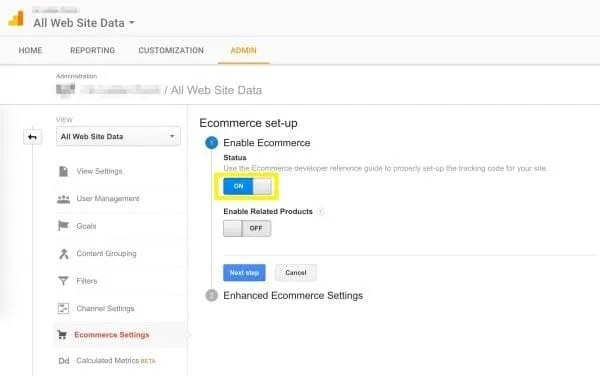
Pro-Tip: If you like more information on how this can be done, check out this guide.
A case study done by Visual Website Optimizer showed that larger, high-quality images improve sales.
Czech ecommerce retailer Mall.CZ improved their conversion rate by 9.46% after using larger product images with product description.
Similarly, Peep Laja, a conversion rate optimization expert theorizes that Schwan’s (a home-delivery food service)’s high conversion rate is due to their high-quality images.
B - Add Trust Badges

Trust badges are badges that verify to visitors that a website is legitimate. The trust seal company (a 3rd party) collects data that confirms the website is authentic and not a scam.
Why is this important?
One of the key concerns a visitor has when first visiting your website is whether your website is legit.
And trust badges help allay that anxiety.
Blue Mountain Media (a digital agency) improved their conversion rate by 42% after adding a simple VeriSign seal. Virtualsheetmusic.com saw an increase in conversions by 31% by adding a VeriSign trust seal. And by adding a Norton Secured (SSL) trust mark, US Cutter, a supplier of vinyl cutting supplies increased their conversion by 11%.
C - Add Customer-Submitted Reviews

Has other people purchased this product before? Is it good? Will I be making a good decision in purchasing this product?
Help your customers by adding customer-submitted reviews to your product pages.
This allows them to read through and get affirmation that what they are doing is correct.
Express Watches improved their conversion rates by 58.29% simply by adding customer reviews to their product pages.
D - Add Live Chat
It’s proven: live chat increases conversions.
In one of Monetate’s tests, they conducted on ecommerce clients, adding live chat to their website increased the average order value by 3%. Another company, EZ texting improved its conversion rate by 31% simply by adding live chat.
With the addition of live chat, potential customers can now communicate with customer service managers who can answer questions and close them.
E - Improve Your Value Proposition

The value proposition is the #1 reason why your customers come and buy from you. It should describe to him or her why they need you, and why they should choose you.
Improve your value proposition by making it crystal clear why they are there and how you can help them.
Pro-Tip: For more strategies to improve your conversion rate, check out this post on ecommerce best practices.

After you've taken the necessary steps to improve your conversion rate, it's time to look at traffic.
Imagine these numbers:
Isn't that awesome?
More traffic = more sales = happy jiggle!
You should be able to see your traffic stats from the ecommerce platform that you are using. For more information, check the Help Guides of your ecommerce platform.
Here’s an example from Shopify:
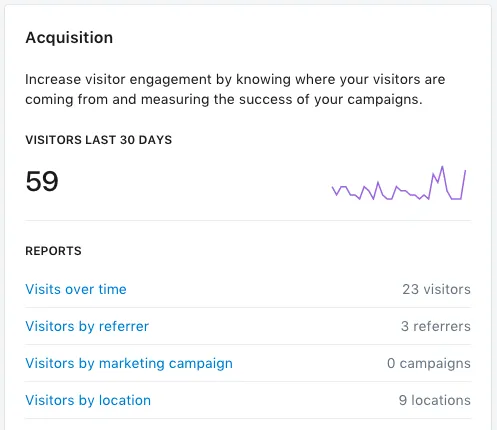
Step 1:
Click Reports in your Shopify Admin page.
Step 2:
Go to the Acquisition section where you can drill down into the reports you want, e.g visits over time, visits by referrer.
If you are using Google Analytics, you should be able to see it right here:
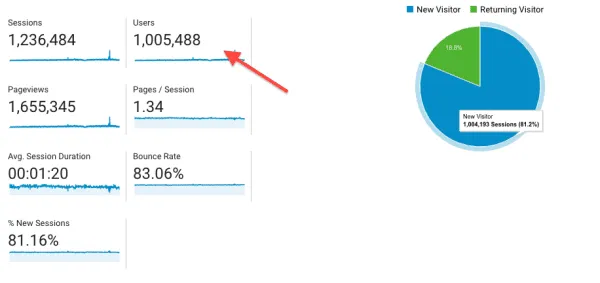

According to Gary Vaynerchuk, the Internet IS social media. No doubt, social media is a huge channel for entrepreneurs and marketers to leverage and reach their audience.
Find out which platforms your customers are gathering at, and actively engage them there.
Pro-Tip: Here are 5 ADVANCED ways you can use social media to drive traffic to your store.
B - Search Engine Optimization (SEO)
"SEO is dead," declared marketers after their websites got penalized by the almighty Google.
Nope.
SEO is not dead. Bad SEO is.
SEO is the art of “pleasing” search engines so that they will rank you higher. And as Google begins to refine their algorithm further, there are signs that they are now focusing on user experience (UX).
That means…. Good SEO is even more important than ever.
Good SEO is helping search engines do their jobs better. If you optimize your on-page SEO, create great content, deliver fantastic experience to your users, there IS no reason why Google will punish you.
Plus… It is estimated that a whopping 30.5% of all ecommerce traffic originates from search engine traffic.
If you’re not utilizing SEO… You’re missing out.
Pro-Tip: Here’s a guide on how to increase search engine traffic to your ecommerce store.
C - Influencer Marketing

Social media has empowered many individuals to build their personal brand and curate a huge following.
These people are known as influencers.
Influencer marketing is simply the process of building relationships with these influencers to get your products in front of their audience.
These influencers are trusted by their following to make good recommendations, and if you do this correctly -- can drive huge amounts of traffic, social proof and sales to your online store.
Pro-Tip: Here are examples of how HUGE brands have leveraged influencer marketing to grow their businesses.

Email marketing remains one of the most profitable channels you can pursue for your ecommerce store. In fact, email marketing has been shown to provide a 40X ROI over other channels, including social media.
Also, the side benefit of collecting the emails of your potential customers is the ability to control your audience.
If you build your business off Facebook, Instagram or Google, a single change in their algorithm or policies can bankrupt your business overnight. However, if you own a email list of your customers, you have the ability to sell them products over and over again without being punished.
That’s the power of email marketing.
(# of emails opted in) / (# of users) x 100% = Email Opt-In Conversion Rate
There are 2 ways in which you can do this:
A - The Manual Way
Every email service provider should be able to show you how many emails are opting in into your list daily.
Here’s an example from Mailchimp:

Simply take that and divide by the number of users (which you can find out from Google Analytics) -- and you will get your opt-in conversion rate.
B - The Automated Way
The second way to do this to set up a conversion goal. Head to Google Analytics, set up a conversion tracking goal by adding the tracking code to your “Opt-in Thank You Page”.
Pro-Tip: Read this guide for the step-by-step if you are unsure how it is done.
A - Add An Opt-In Offer
Give people a “carrot” to opt-in.
Instead of telling them to opt-in into your site for no reason (or “get updates”), tell them WHY they should opt-in to your site.
Here’s how SkinnyMint did it:

B - Ask For Emails More Aggressively
Now, by no means am I suggesting you to add opt-in boxes at every empty space you have in your website.
But you can definitely do better.
Some businesses bury their opt-in boxes at the footer of their website -- which makes it hard for visitors to opt-in.

While you shouldn’t spam your visitors with opt-in boxes… You CAN become a little bit more assertive when it comes to asking for their emails.
You can...
Use a Welcome Gate:

Or an Exit Intent Pop-Up:
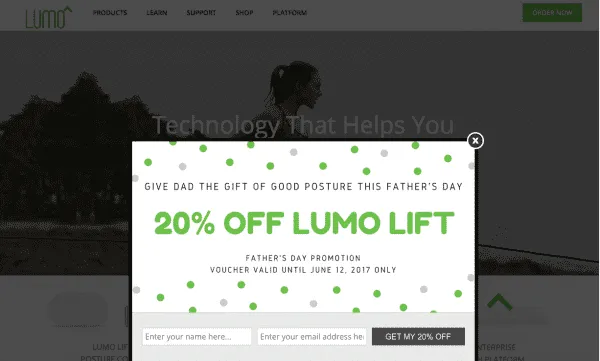
C - Change Up Your Offer
Already offering something, but still getting poor opt-in rates?
Then your offer might not be something your target visitors want.
Try A/B testing your offer (most email tools should allow you to do this) and see which one performs better.
Pro-Tip: For more resources on how to do email marketing well, read this ecommerce email marketing guide. Subject lines are arguably the most important part of emails, so you'll also want to read this post from Omnisend about Best Performing Subject Lines.
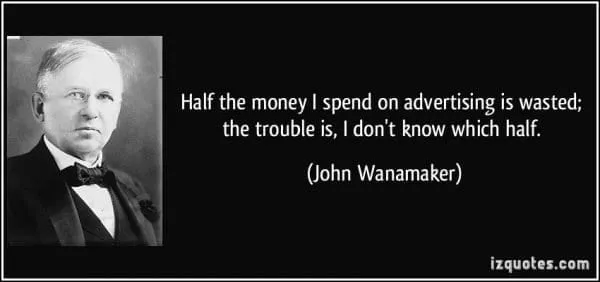
Famous advertiser John Wanamaker once quipped:
“Half the money I spent on advertising is wasted; the trouble is I don’t know which half.”
Though this quote was made 100 years ago, it still rings true for many businesses today.
We spend all our time, effort and money trying out different traffic sources, but have absolutely no idea whether they are working.
That’s why it is important that you track this metric known as “revenue by traffic source.”
According to Catalin Zorzini, owner of ecommerce-platforms.com:
“Revenue by traffic source is essential since it shows which channel your customers are coming from. If you only track visits or transactions, you’re missing half the story. You only get a handful of chances to reach your most dedicated customers, and spending the time and money to market through an unreliable traffic source is going to cut into your revenues.”
Only by doing this will you be able to identify the traffic source that is working… so you can double down on it.
If you have set up your ecommerce tracking properly (refer to Metric #1), you should be able to view this in your Google Analytics.
Pro-Tip: Want to turn your Google Analytics into a dashboard where you can see everything clearly? Follow this step-by-step guide.
While this is highly subjective as it depends on which traffic source is doing well for you… here are some general tips.
A - Stop Spending Money On Channels That Don’t Work
If you discover that there is a particular channel that isn’t delivering results to you, stop spending time and money on it.
Yes, even if that channel is utilized by ALL of your major competitors.
Why?
Because every company is unique in its makeup. By testing multiple channels, your job is to find the channels that is RIGHT for your company, not the channels that is used by everyone else.
If that channel isn’t working for you, abandon it and focus your efforts elsewhere.
B - Double-Down On Profitable Channels

Spot a traffic source that is way over-delivering on results? This is your chance.
Scale up that channel. Invest more money and time in it.
In fact, this is what Jessica of Raw Generation did. She tested using deal sites as a way to promote her juice company -- and doubled down on it when she discovered that it worked.
[caption id="attachment_22592" align="aligncenter" width="600"]

Image: Forentrepreneurs.com[/caption]
What if every customer you acquire is making you a loss? What if you’re spending more to get a customer than what the customer is spending at your store?
Horrifying thought, yeah?
To prevent this problem, you must measure your Customer Acquisition Cost (CAC).
Customer Acquisition Cost is the average expense of gaining one customer. This includes everything from marketing and sales expenses to salaries and overhead associated with attracting and converting a visitor to a customer.
And according to David Skok, General Partner at Matrix Partners, you MUST get this right, if not it will kill your store:
“Failure to get product/market fit right is very likely the number one cause of startup failure. However… I believe the second biggest cause of startup failure is: the cost of acquiring customers turns out to be higher than expected, and exceeds the ability to monetize those customers.”
(Total Sales and Marketing Expenses) / (# of Customers Acquired )= Customer Acquisition Cost
Pro-Tip: To calculate your CAC accurately, here’s a good guide.
A - Improve Your Sales Conversion Rates
A higher conversion rate means that you’re converting more of your traffic into customers, which means getting more sales with the same number of visitors.
Spend the same and get more sales = YES!
We’ve already discussed how to improve your sales conversion rate in Metric #1, so simply hop back and take a look.
B - Leverage Referrals and Word-of-Mouth
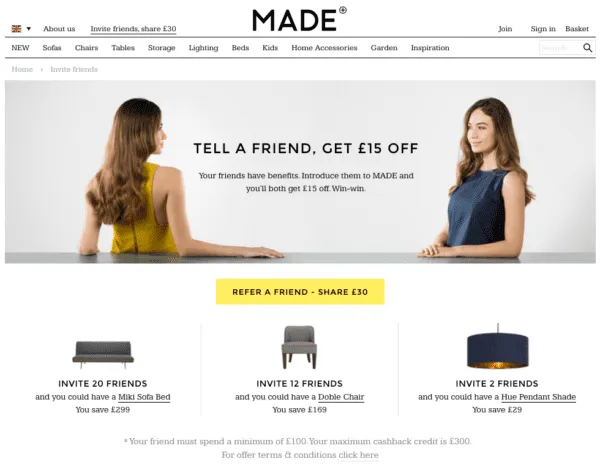
If you can get every customer to refer one new customer to you, then give yourself a huge pat on your back.
Why?
Because you have effectively slashed your CAC by 50%!
Every successfully referred customer costs you NOTHING to acquire. All it takes is for a satisfied customer to tell his/her friends to spend at your store.
Pro-Tip: Set up your referral program using ReferralCandy.
C - Mix Up Paid Channels With Free Channels
[caption id="attachment_22593" align="aligncenter" width="600"]

Image: Shopify[/caption]
Paid marketing is great.
But it's not the only way to get traffic.
In fact, there are many free channels out there you can leverage to get more sales. You can choose from channels like:
To reduce lower marketing costs, experiment with free channels to see if they can drive sales for you.
Pro-Tip: Listen to this podcast about how Man Outfitters utilized content marketing to drive $2 million in sales.
D - Invest In Your Customers
Your customers are your lifeblood of your business.
When you invest in them and their satisfaction, you increase their likelihood of recommending your store to their friends. You encourage them to make repeat purchases because they love you.
Provide excellent customer service to make them happy. Help them make better, informed decisions. Make the entire purchase experience fantastic.
Pro-Tip: Want more suggestions on how to reduce your Customer Acquisition Cost? Read this guide.

According to ConversionXL, there are only 3 ways to grow a company:
This is #2 of the THREE ways to do so.
Average Order Value is the average dollar amount a customer spends when they make a purchase from your website.
Imagine this:
Which means:
The more the customer purchases in a single order… the more profit you’ll be able to make.
(Total Revenue) / (# of Orders Placed) = Average Order Value
A - Upselling
Upselling is the art of encouraging your customers to spend more than they had originally intended.
This includes:
Here are some examples of how to do upselling effectively:
Using different wording to make a more expensive product more lucrative:

Recommending products that will complement an existing purchase:

Bundle Sales:
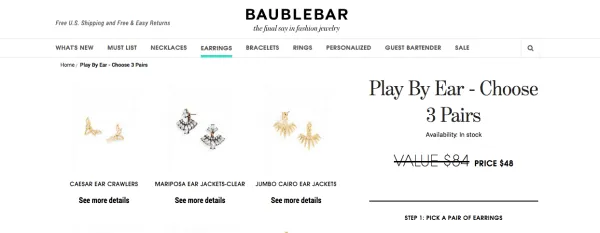
B - Offering Free Shipping For A Higher Purchase
You could tempt your customer to add more products into their cart so that they would qualify for free shipping.
This is something Amazon excels at:
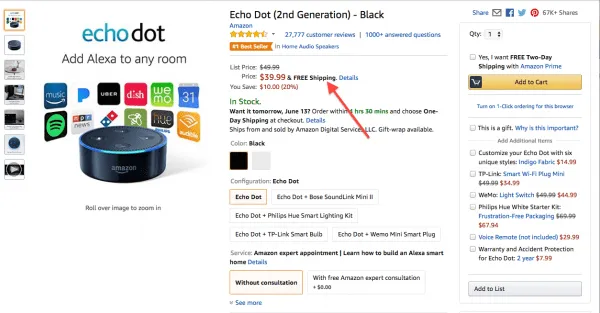
C - Offer Discounts On Minimum Purchase
Tell your customers that they could get a larger discount if they hit a minimum purchase target.

D - Incentivize Them With A Freebie
Tell them that they can get something free if they 1) buy the more expensive product or 2) hit a minimum purchase target.
An example:
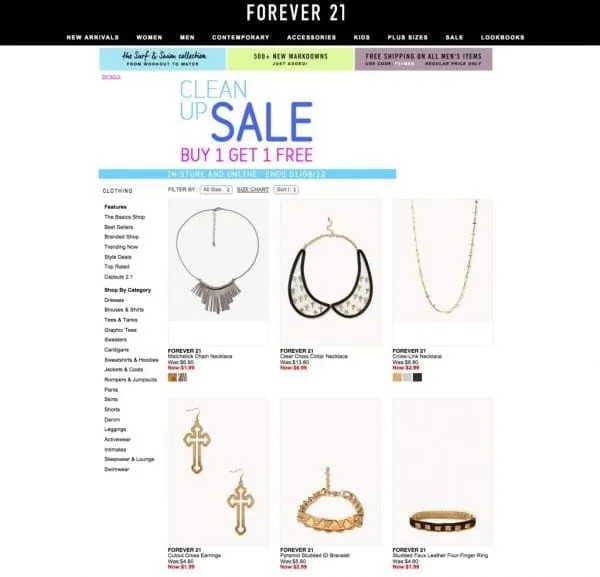
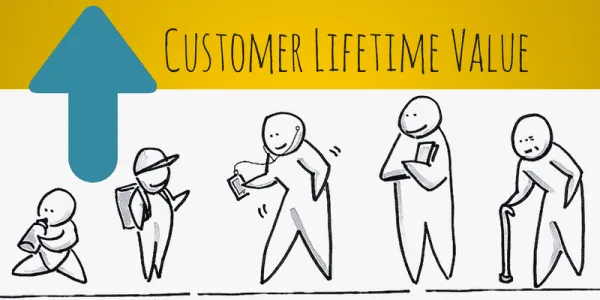
According to Tech In Asia, the customer lifetime value (LTV) refers to the amount of money each customer is expected to spend on your products and services.
Why is this important?
Knowing your customer lifetime value will allow you to make several important business decisions. For example:
And so on.
Formula For Customer Lifetime Value
There are many ways to calculate the LTV of your customers. Here are 3 formulas:
Formula 1:

Where,
a = average customer value per week
t = average customer lifespan
Formula 2:

Where,
t = average customer lifespan
s = customer expenditure per visit
c = number of visits per week
p = profit margin per customer
Formula 3:

Where,
m = average gross margin per customer lifespan
r = customer retention rate
i = rate of discount
Confusing? It is. Here’s a quick CLV calculator you can use (warning: not for businesses with complicated CLV.)
A - Increase Your Customer’s Average Order Value
If your customers consistently order more at every single purchase, their lifetime value will increase.
B - Build Long-Term Relationships With Your Customers
[caption id="attachment_22606" align="aligncenter" width="600"]
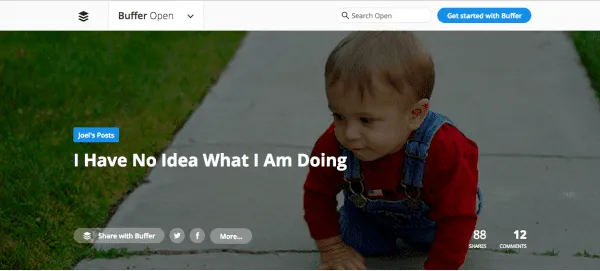
Buffer's inspiring transparency.[/caption]
When your customers love you, they are more loyal and more willing to buy more of your products. If they stay loyal to your brand, their customer lifetime value will increase.
Do this by being honest and transparent with your customers. Keep them updated on what's going on , and what's in the pipelines for you and your store.
You can also reward your best customers regularly and let them know you appreciate them. You can also consider a customer loyalty program for a more formal system of tracking regulars and offering rewards, but the key is to build the relationship.
C - Create Brand Loyalty

While there are many detractors of the Apple fanbase, it remains true that Apple has created avid loyalists that will purchase anything they create.
How do you begin building a "cult" of fans like Apple, who are loyal to your cause?
While this is a huge article in of its own, here are some quick tips:
Pro-Tip: Want more tips on increasing LTV? Read this guide.

Most businesses focus too much on getting new customers in the door -- and then neglecting people who are already customers.
Their journey doesn't end there.
After they have bought a product from you, they can buy again and again and again.
And it is better (and cheaper) for you to focus on your existing customers, as Invesp shows, it costs 5x as much to acquire a new customer than to keep an old one.
Here's what ecommerce expert Richard Lazazzera has to say:
“It’s cheaper to get past customers to purchase again than it is to find new customers. This is true for most businesses, especially in the crowded online ecommerce arena where ad impressions, clicks and conversions always seem to be increasing in cost, making new customers more and more expensive to acquire.”
(# of Returning Customers) / (Total Customers) x 100% = Percent of Returning Customers
You could also follow this formula:
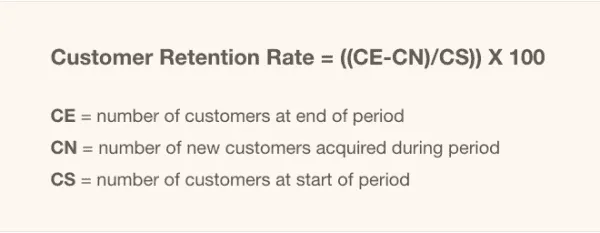
A - Go The Extra Mile To Delight Your Customers
Go the extra mile and make them love you. Deliver extraordinary service and surprise them occasionally.
It can be something really small like a digital gift certificate or a personal handwritten Thank You note.
And research says it works - reciprocity is far more powerful when started by surprise.
Here’s an example:
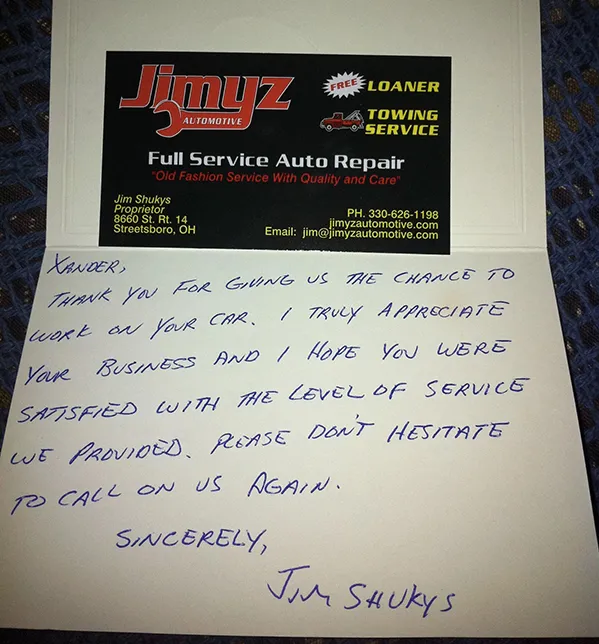
Warby Parker also did something similar - replying customer questions on Twitter with personalized YouTube videos:

Bonus Point: The videos delighted their customers so much that it went viral!
B - Implement A Customer Loyalty Program
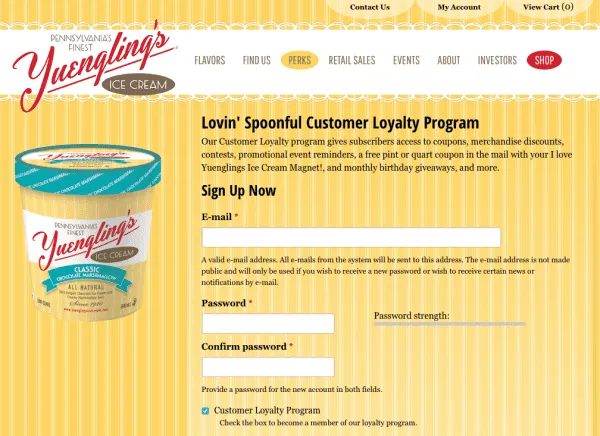
Reward customers for staying loyal to you. Encourage them to come back to your store often to redeem rewards, gifts and discounts.
Pro-Tip: Here are 31 loyalty program examples you can model from!
C - Send Regular Newsletter Emails

Communicate with your customers often. Send regular email newsletters to inform them of upcoming sales, product releases, company updates and so on.
D - Organize Meetups And Offline Events
Want to build a better relationship with your customers?
Meet them face-to-face and build trust! You'll also be able to get important customer feedback lost during online communication.
In fact, this is how Xiaomi grew to become such a huge smartphone company:

If offline events are tough to organize for your niche, then take a leaf out of Black Milk Clothing's book.
They created local Facebook groups and pages dedicated to buying and swapping their products -- and then participated in them.
Shopping cart abandonment rate is the percentage of online shoppers who add items to a shopping cart and then abandoning it before completing the purchase.
Shocked that people do that?
Don’t be.
In fact, 68.63% of visitors abandon their shopping carts.
Why do they do so?
Here’s an idea of why:
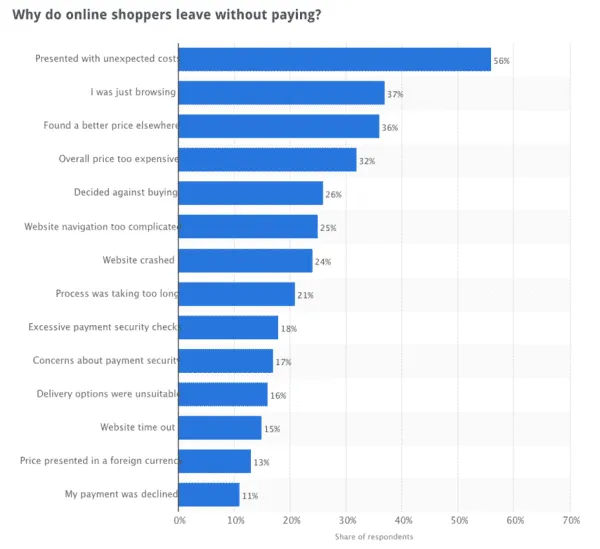
Measure your shopping cart abandonment rate -- and then test different strategies for reducing it.
1 - (# of completed purchases) / (# of shopping carts created) / 100 = Shopping Cart Abandonment Rate
Follow this exact step-by-step guide to learn how to set up Google Analytics to track Shopping Cart Abandonment Rate.
A - Reduce distraction during the checkout page by removing everything else on the page. Let the customer check out smoothly.
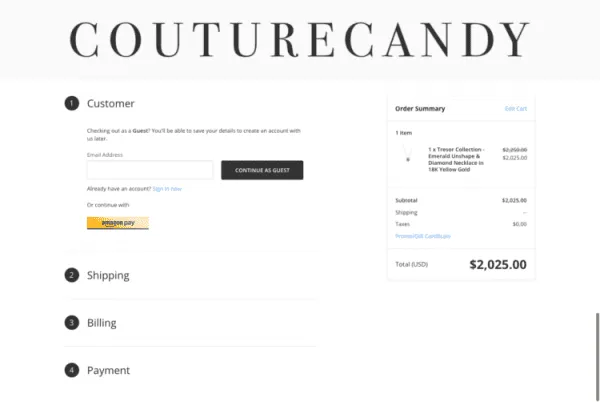
B - Educate the customers about the number of steps required to finish the checkout.

C - Use remarketing to get them back to the cart
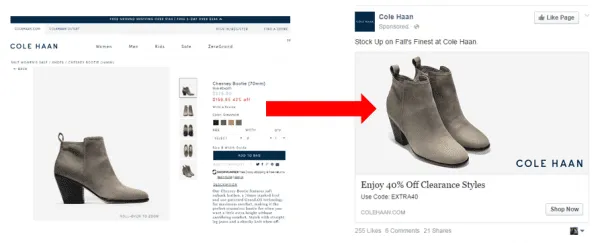
D - Send cart abandonment emails
These are emails sent to your potential customer after they abandon the cart. The purpose of these emails is to get them to come back and complete the cart.
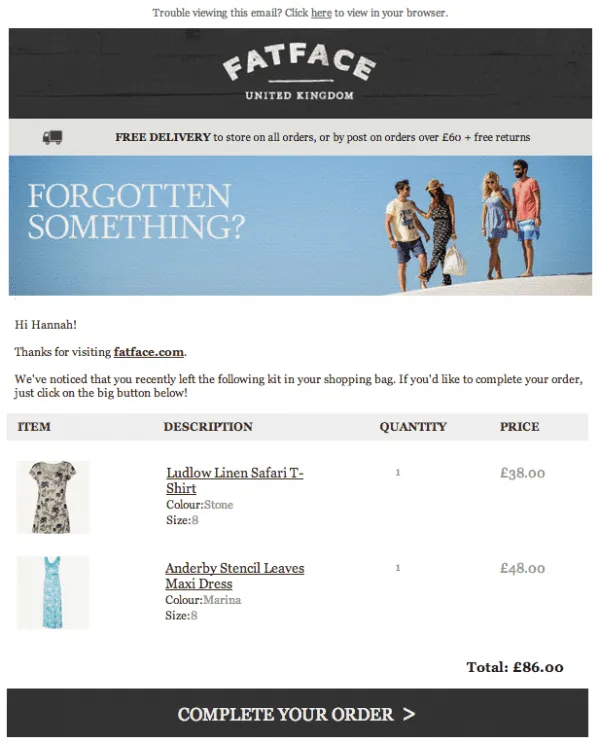
"If 40% of your users say they will be very disappointed without your product, you have attained product-market fit." - Sean Ellis, Founder, Growthhackers.com
Although Sean meant it in the context of product-market fit, it is still important to measure customer satisfaction no matter which stage of business you're in.
Why?
Because the true measure of a long-lasting brand is how much its customers love and support them.
So how do you measure customer satisfaction?
Use Net Promoter Score (NPS).
The NPS is a very simple survey that measures how likely a customer is to recommend your brand to a friend.

The NPS is calculated based on the rating to one single question:
“On a scale of 0 to 10, how likely are you to recommend this company’s product or service to a friend or a colleague?”
Then, based on this rating, customers are classified in 3 categories:
A - Detractors
People who give a score lower or equal to 6. They are not excited about the product or serviec and will likely not purchase again.
B - Passives
People who give a score of 7 or 8. They are somewhat satisfied but may skip to a competitor if the opportunity arises.
C - Promoters
People who give a score of 9 or 10. These are people who love the company’s products and will evangelize the company by repeatedly purchasing and recommending it.
Whilst you can physically send an email to all your customers to do the NPS, it’s better if you automate the entire process using available tools.
Tools that are available include:
A - Reach Out To Detractors And Passives After The Survey
People who have answered your survey are people who have taken the time out to show you their dissatisfaction.
As much as you dislike to hear it, who better than to talk to provide valuable feedback on how to improve your products and services?
Reach out to them and find out what exact problem they are facing. If it’s a small issue and solvable, do it. If it’s larger, take note of it and promise to fix it.
You’ll be surprised how effective this is in turning your detractors and passives into promoters.
B - Reward Your Promoters
Promoters who love you are a sign that you’re doing well. Make them even more loyal to your store by rewarding them.
Here’s a recap of the 10 metrics you should measure:
Improving any one or combination of these metrics will result in an increase in your website valuation when it comes time to look for an exit.
There are more metrics out there that I did not include in this post.
It's not that they are not important; it's just that they are NOT as important. Focus on measuring and improving these 10 metrics -- and you'll see your business grow steadily.
Check out other articles you may like here:
Si Quan is ReferralCandy's Content Marketing Manager. He is also the co-founder of BreakDance Decoded, an online breakdance training company. He loves standup comedy, and has a dream to visit at least 100 countries in his lifetime.
Grow your sales at a ridiculously
lower CAC.